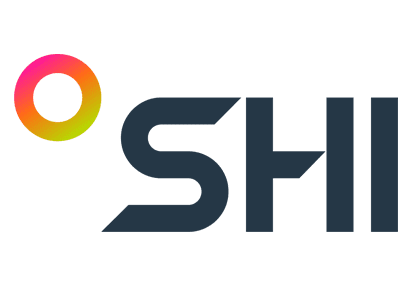Shadow AI threats are on the rise: How to secure your organization:
Understand the hidden dangers of unsanctioned AI use before it’s too late.

Generative AI has supercharged the way organizations operate. From content creation and data analysis to intelligent chatbots and software development, it has undoubtedly enhanced capabilities for teams across every industry.
But with new technology comes unexpected road bumps.
A recent study by CybSafe and the National Cybersecurity Alliance (NCA), which surveyed over 7,000 individuals, revealed that 38% of employees reported sharing sensitive work information with AI tools without their employer’s permission.
As organizations continue to embrace artificial intelligence, it’s evident that innovation must go hand-in-hand with training and security.
From shadow IT to shadow AI
As employees become more tech-savvy, many organizations’ clunky, outdated technology isn’t cutting it. Employees are turning to their own unsanctioned technology, forgoing company approval without taking the time to understand the risk. This phenomenon is known as shadow IT — software, hardware, or services used outside of the control of an organization’s IT department. While well-intentioned, shadow IT can do more harm than good, fragmenting the greater IT environment and complicating compliance efforts.
Shadow AI is a newer offshoot of shadow IT and involves the unauthorized use of AI-specific tools, specifically generative AI. Employees use these tools for quick reporting, document summaries, and creative work, unaware of the risks of inputting sensitive company data into these platforms. Shadow AI opens organizations to security vulnerabilities and data leakage without enterprise-grade security.
It’s time to regain control of your IT environment and stay ahead of shadow AI vulnerabilities.
The hidden dangers
The dangers of shadow AI are hidden, lurking beneath the surface. Overlooked, these threats can compromise security, compliance, and data integrity. Shedding light on these risks is the first step toward successful AI adoption.
Data loss and leakage
An employee copies sensitive information from legal documents into a public chatbot, hoping to give their team a quick summary. Unbeknownst to them, the chatbot stores the data, which is later leaked during a data breach. This puts the entire organization at risk and could’ve easily been avoided if the employee had used a secure, approved AI tool.
Many large language models (LLMs) retain user input to improve future models, meaning a simple “paste” of data can lead to serious consequences, including confidentiality breaches and intellectual property theft. To mitigate these risks, organizations should monitor outbound traffic to AI domains and use data loss prevention tools to flag when sensitive data is uploaded to unauthorized websites.
Compliance risks
A healthcare worker uses a public AI tool on a hospital device to summarize a patient visit. The AI tool then stores the data from the tool on a server in another country. The healthcare worker unknowingly violates HIPAA, risking patient data and opening the hospital up to a compliance investigation.
With many industries abiding by strict data handling laws, organizations must look out for non-compliant AI tool purchases. IT teams also need to know where AI tools process data and ensure they can keep track of all AI usage.
Security threats
A web designer downloads a free AI model from a website to generate images. The AI tool creates a great image, but it installs malware onto the employee’s computer, sending company data to hackers.
Downloading or using AI tools from unapproved websites can leave organizations vulnerable to malware, data theft, unauthorized access, and spyware. To easily spot when an unauthorized AI tool is being used, IT teams should watch for large file downloads on employee devices and use end-user security software to flag anything suspicious.
Over trust in AI outputs
A large company’s marketing team uses an AI tool to write a press release for a major product announcement. The AI tool pulls outdated data and publishes the release without fact-checking. The result? A PR nightmare. The team tries to retract the announcement, but the damage is done.
Organizations that rely on AI without verifying its factual accuracy can suffer reputational damage and legal consequences. Before publication, all AI-generated copy must be reviewed and verified by subject matter experts. Enacting content audits can also help ensure stats are up-to-date and accurate.
Taking back control
While the unsanctioned use of AI poses a significant threat to organizations, AI in the workplace is not going anywhere, so teams need to understand and manage the risks while enabling safe and controlled use.
Understand AI usage
Effectively managing AI at the enterprise level starts with understanding what AI tools employees are using. Organizations should begin by studying AI’s current and ongoing usage within their environments. Which AI tools are being used the most by employees? Are these tools being used in a safe, effective manner? Are there safer alternatives? Once IT teams know what is being used, they can implement comprehensive governance frameworks and policies aligned with AI system usage.
Educate and empower employees
The next big step in managing shadow AI is education. It is vital to provide security awareness training for employees to better understand the risks associated with AI and how to utilize safe and effective cybersecurity best practices properly. IT teams should work closely with employees to steer them towards approved tools to enhance productivity.
Build a resilient AI security posture
Lastly, applying modern security practices can help facilitate safe AI usage. This includes:
- Identity and access management (IAM) – Prevents users from accessing unauthorized AI tools and sensitive data.
- Visibility and monitoring – Tracks use of AI tools and flags unusual access patterns.
- Threat modeling – Identifies and addresses potential security threats.
- Endpoint protection – Blocks unapproved AI tools and detects security threats such as malware.
- Data classification and labeling — Recognizes and categorizes sensitive data to prevent leaks.
- Data loss prevention (DLP) — Implements controls to protect against data leaks to public SaaS services.
Proactively approaching safe AI adoption can help manage challenges associated with shadow AI and promote responsible AI use within organizations.
AI adoption is inevitable
According to the 2025 Work Trend Index Annual Report from Microsoft and WorkLab, employees are using AI for its 24/7 availability (42%), machine speed and quality output (30%), and ability to generate ideas on demand (28%).
Your workforce wants to use AI — there’s no way around it. Restricting access to AI tools will only hinder innovation, so the best way to tackle the challenges associated with shadow AI is to empower your workforce with secure access to enterprise-grade AI solutions.
Secure AI integration starts with SHI
Shadow AI presents both a challenge and an opportunity. Your employees want to embrace AI and are eager to innovate. That’s where SHI comes in. We help you build a strong foundation, with the right policies, procedures, and standards, to support secure AI adoption.
Our experts assess your environment and set you up with the necessary tools to help you detect and respond to shadow AI with key technologies, including:
- Secure Web Gateways (SWG) – security checkpoints between users and the internet to block unauthorized AI traffic.
- Cloud Access Security Brokers (CASB)– give IT admins control over how AI tools are being used across the organization.
SHI supports your AI journey by working with you to design AI governance frameworks, train teams on safe AI use, deploy enterprise-grade AI platforms, and deliver reporting to provide improvement recommendations.
We’re here to give your teams the right tools to harness AI responsibly. Contact our experts to start building your AI strategy today.




